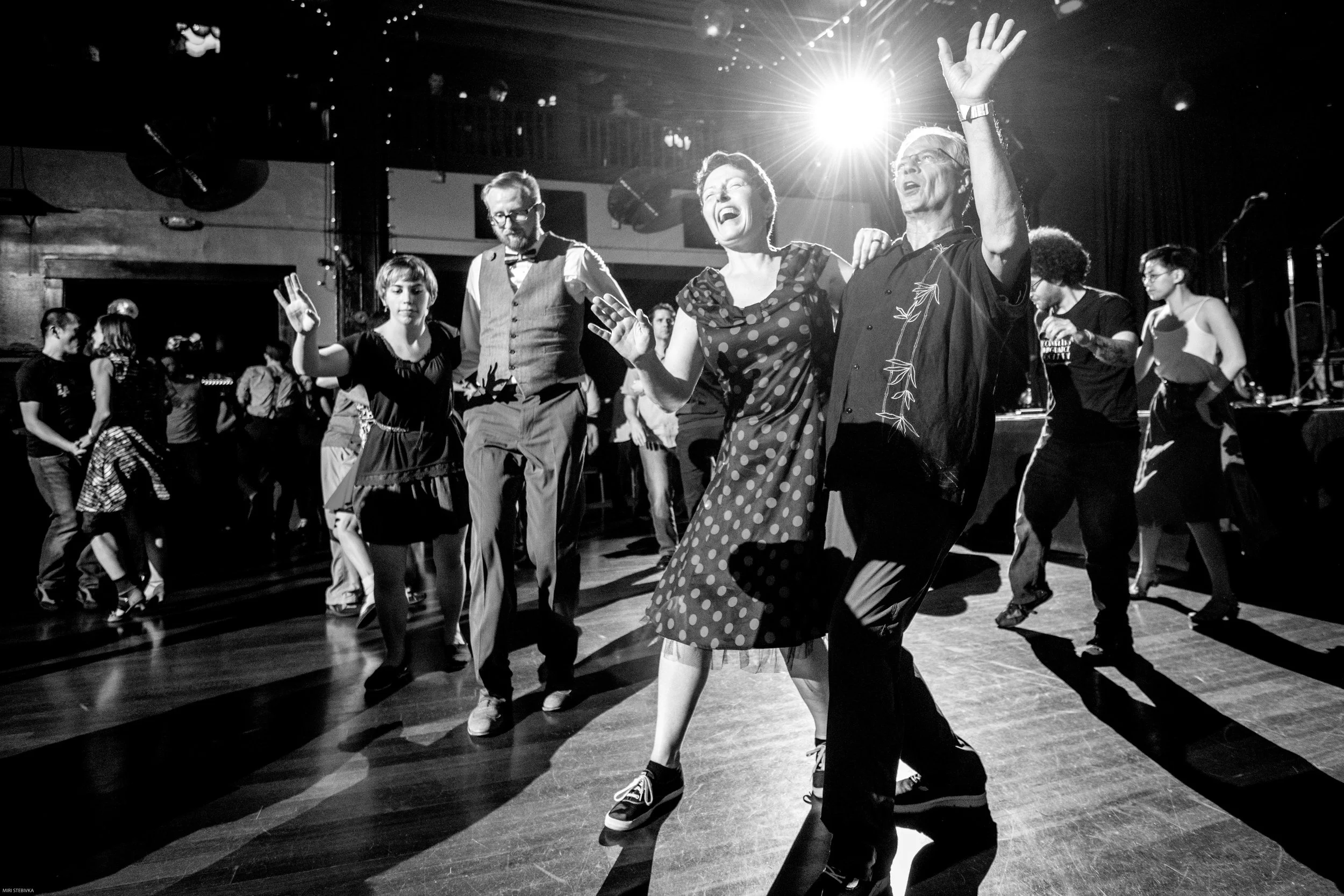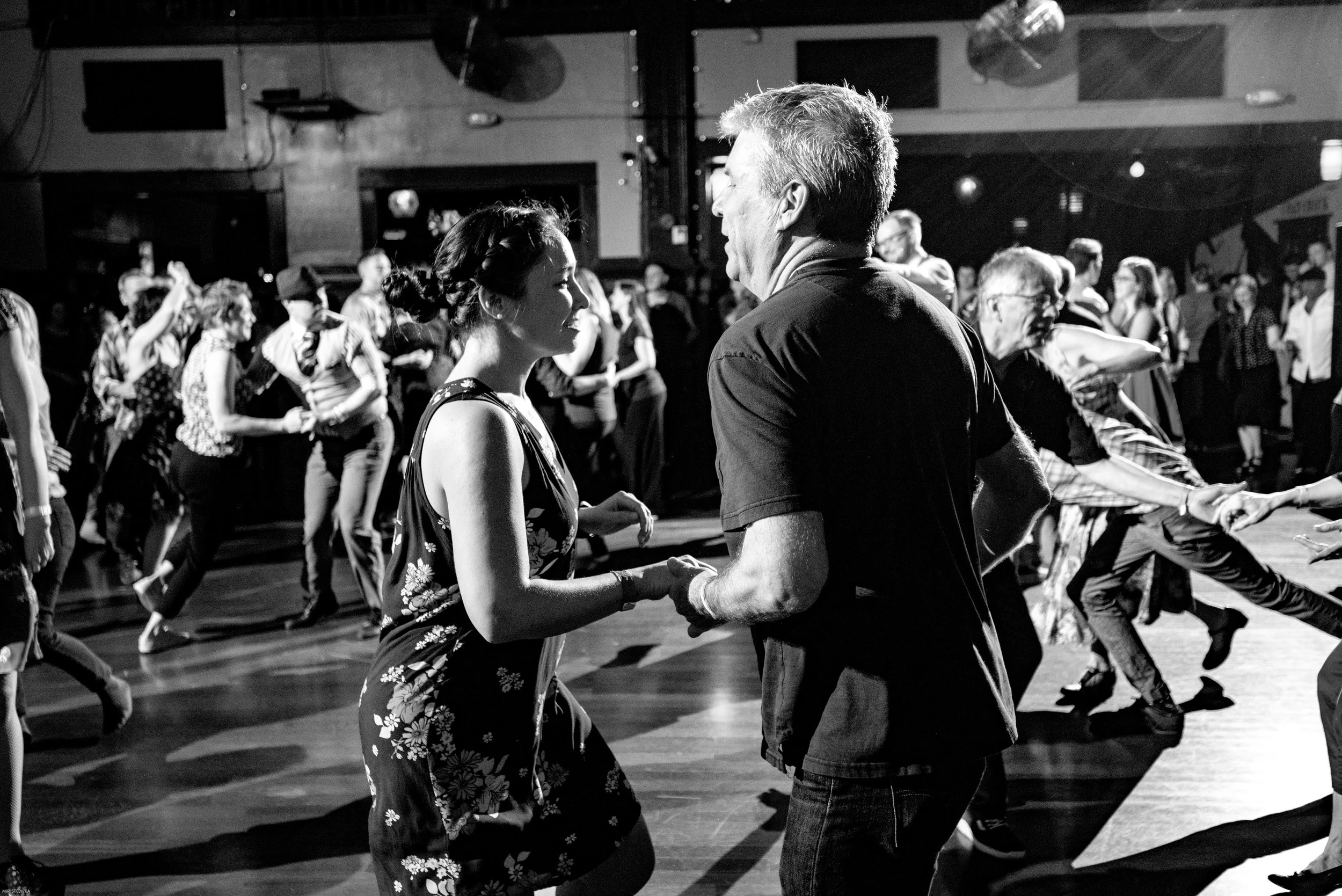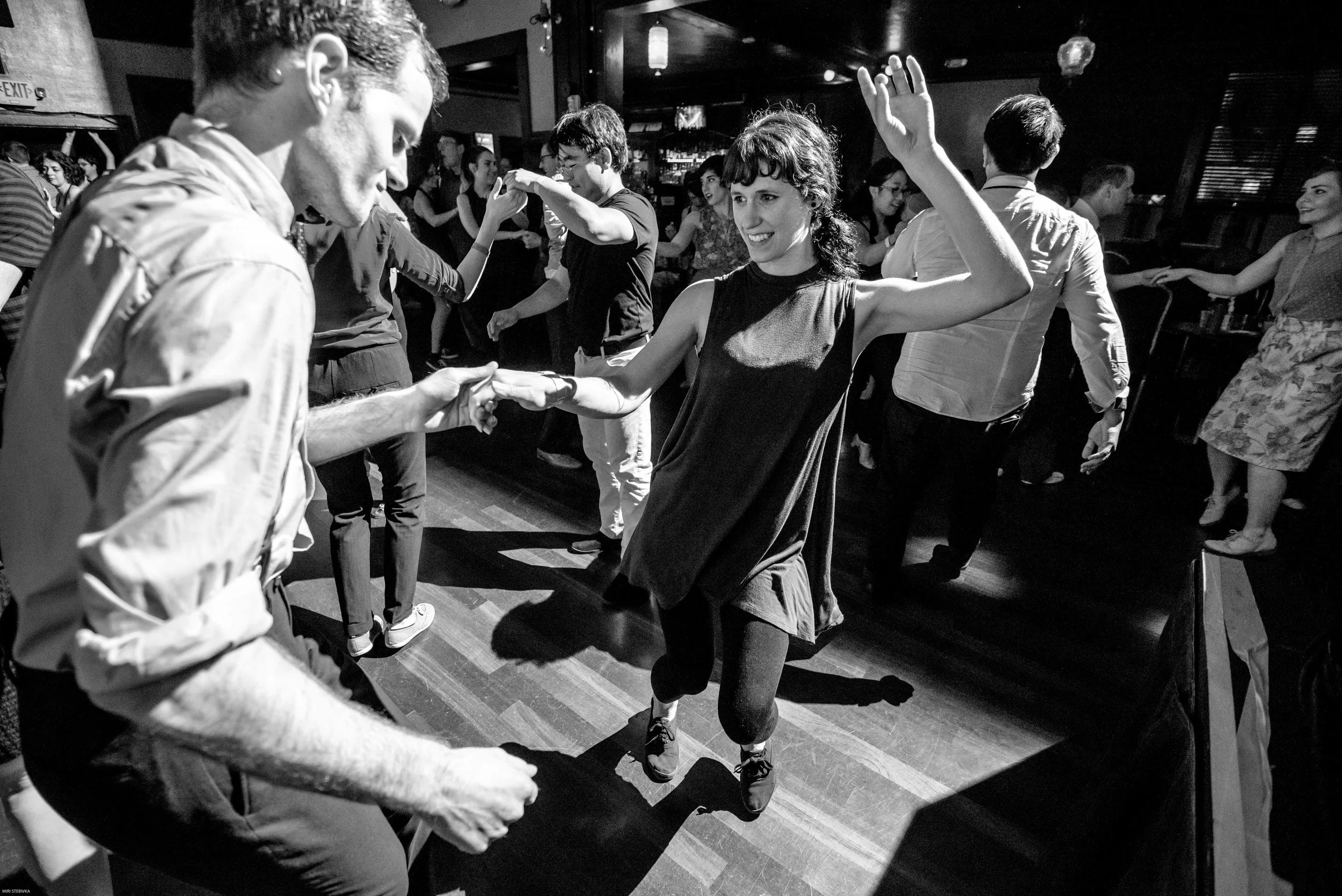
New to Swing Dance? Start Here.
Photo Credit: Evrim Icoz
What is Swing Dance?
-
Invented by Black dancers in Harlem in the late 1920’s, Lindy Hop grew organically out of existing dances when partners began to “break away” from each other while dancing to fast paced swing music.
Lindy Hop was immensely popular and was danced to big band swing music across the United States through the 1930’s and 40's. The “break-away” eventually became known as the Swing Out, Lindy Hop’s signature move. -
Charleston was all the rage in the roaring 20’s. 1920’s Charleston was either danced solo or partnered. The dance evolved new steps and shapes over time, and is one of the underpinnings of Lindy Hop. It’s normal for Charleston steps to be seamlessly integrated with Lindy Hop dancing.
-
By the 1930's, swing music and swing dancing had become so popular that some dance floors were too crowded to dance. To adapt to these conditions, dancers in the Balboa Peninsula near Los Angeles developed a compact close-embrace style with shuffling footwork that made easy work of higher tempos. Later, the dance grew to incorporate breakaway steps.
-
Solo Jazz is a collection of vernacular jazz steps and movements danced without a partner. Elements of different dances such as Charleston and tap dance are incorporated and stylized.
You may see folks dancing solo at social dances, or participating in routines or line dances like the Shim Sham or the Tranky Doo. Solo jazz movements are also used as styling in the partnered dances. -
Collegiate Shag, often simply referred to as Shag, is believed to have been invented by African American youth in the Carolina’s in the 1920’s and 1930’s. Shag is an energetic dance with a basic step that appears to hop from the ground, but is really more of a controlled shuffle (which uses a lot less energy than actually hopping).
-
“East Coast Swing” refers to a handful of simplified lindy hop moves that are accessible for beginners. It’s also sometimes used to distinguish from West Coast Swing. The term was adopted by dance studios teaching vintage swing in the midcentury. The movements still belong to Lindy hop, so you’ll hear us refer to beginning movements as “6 count” rather than ECS.
West Coast Swing was adapted from the smooth Lindy hop style of California and is now danced primarily to modern R&B and pop music. You can find out more about West Coast Swing at https://www.portlandswing.org/.
Swing dance is an umbrella term for a variety of styles of vintage jazz dance. These dances were created alongside the popular music of their day and they have an intrinsic bond to that music—that’s why we still dance them to music from the 20s, 30s, and 40s (and modern bands that play in that style). The music and the dances have deep roots in Black American culture, with a celebration of rhythm, a high value on individual expression, and the use of call and response forms.
Swing dance is social and improvisational. Dancers learn the language of the dance (basic rhythms and shapes) and then take those pieces out to the social dance floor, putting them together in new ways with each dance.
Learn more about swing dance history here.
How Do I Learn?
-
Go Out Dancing!
Lessons are great and fill in the gaps, but if you want to learn to social dance, there is no substitute for getting out there. Dance often, ask everyone, try things out, play, connect with others, and have a great time.

-
Drop-In Lessons
It’s traditional for social dances to offer lessons before the dance starts. These lessons provide a taste of the dance. In Portland, there are drop-in lessons before Thursday Swing and a crash course on Sunday Swing, which is run by our friends at Stumptown Dance.

-
Group Lesson Series
Sign up for a series of lessons to dig in a little deeper. You can find these at The Viscount Dance Studio on Tues/Weds, Stumptown Dance before Sunday Swing, and PLS at Monday Swing.

-
Private Lessons
Refine your skills with one-on-one lessons with experienced dancers. This is one of the best ways to improve quickly. Contact teachers directly to inquire about rates and availability.

-
Workshops
Keep your eyes out for special workshops in the area. They may focus on a particular dance, a routine, a technique, or a topic of interest.

-
Workshop Weekends and Dance Camps
Dancers love putting on big events! Watch for event weekends that offer classes. Don’t miss Camp Jitterbug (Seattle), NW Bal Fest (Seattle), Tracktown Throwdown (Eugene), Camp Hollywood (LA), and Cal Bal (Pasadena).

Photo Credit: Evrim Icoz
Anything Else I Should Know?
-
What do I wear?
There is no dress code for most dance events, but be mindful that swing dance is pretty athletic. Most people wear street clothing that is comfortable to move in. Many folks bring extra tops to change when they get sweaty, and some also bring a sweat towel. Speaking of which, a water bottle is also useful.
Because of the dances’ connection to the early 20th century, some dancers like to adopt vintage styles.
-
What about shoes?
Dance shoes with slick soles are ideal for swing dance, but you don’t have to start there. Lightweight, comfortable shoes work well to start. Self-adhesive sheets of suede are easy to find online and can be cut to fit the soles of your favorite shoes. You’ll notice many, many pairs of Keds on the dance floor that have had this treatment!
Dance shoes are expensive but a worthwhile investment if you plan to dance a lot. They are leather soled and often have leather uppers. There are great swing dance shoe companies in the US, Mexico, Europe, and Asia. Ask dancers about their favorite brands!
-
Any special etiquette?
Swing dances are social dances. It is normal for everyone to dance with everyone. Be brave and ask people to dance!
If you would like to say no, that’s fine. Try not to be rude. If someone tells you no, that’s fine too. Try not to take it personally.
All dancers should be aware of the space around them. Try not to bump, kick, slap, or step on others—and apologize if you do. Aerials are not permitted on the social floor.
Remember that your dance partner is a human—be gentle, and avoid putting them into uncomfortable situations. Please click here for our Code of Conduct.
Be mindful of your personal hygiene.
Don’t come to the dance while sick.
-
What should I bring?
Here are some things you might find useful:
Change of shirt
Sweat towel
Water bottle
Fan
Breath mints
Hair ties, bobby pins, safety pins
-
Leave at home?
Flip flops
Dance wax (or anything else intended to slick the floor)
